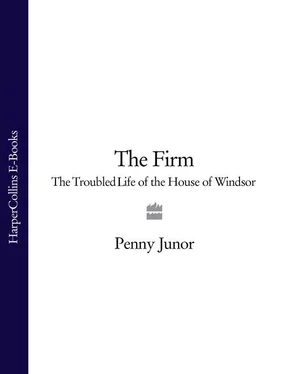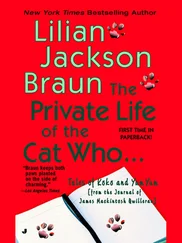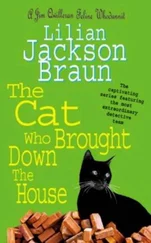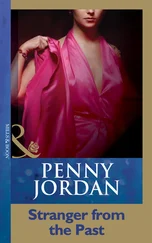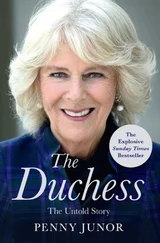Newspapers have also changed since the fifties. When the Queen first came to the throne the newspapers, reflecting the age, were deferential towards the monarch. Proprietors could be relied upon to keep any whiff of royal scandal out of the papers. There were two court correspondents employed by the Press Association who went to Buckingham Palace for briefings – dressed in morning dress and top hat – and meekly lapped up official notices and announcements.
Today’s equivalent is a tabloid ‘rat pack’ charged by their editors with finding exclusives – gossip, scandal and as much personal detail as possible, and, in some cases, by whatever means possible. And the Royal Family is considered to be fair game, as the Countess of Wessex discovered to her cost when a reporter posing as a Middle Eastern sheik tried to employ her PR company. Actors, footballers, pop stars, politicians – many have suffered similar stings or found themselves unwillingly making headline news. And for a family that is dependent upon an army of staff to run their lives, it was only a matter of time before some of them became disgruntled or found irresistible the opportunity to make money by speaking to the press.
This is the environment in which today’s monarchy has to operate. It needs the oxygen of publicity no less than actors, entertainers and politicians, or anyone else with something to sell. The Queen understands this only too well, from history as well as her own experience. Never has the monarchy been so unpopular in modern times as when Queen Victoria vanished from sight after Prince Albert’s death in 1861. In her grief, she hid herself away at Balmoral and, although she carried on the affairs of state perfectly well, she did not make a public appearance in London for three years. The people were furious and when they did finally catch sight of her they pelted her carriage with stones. It was apparently not enough that she saw to her constitutional duties. The present Queen stayed away from London after the death of the Princess of Wales – she was also at Balmoral – and the public was again furious. They wanted to see their Queen. The newspaper headlines during the week before the funeral were the most critical of her reign and it was not until she returned to London and spoke to the nation on television, both as a grandmother and as Head of State, that the crisis, possibly the most serious of her reign, was averted.
The question is why? Why did so many thousands of people flock to Buckingham Palace in their grief rather than to Kensington Palace, which was where Diana had lived after all? Why did the nation want to see the Queen so badly? Strictly speaking, at the time of her death Diana was no longer a member of the Royal Family, and anyway, ought it not to have been her former husband to whom they should have looked?
The reason, I suspect, goes to the very heart of what monarchy is all about. It goes far beyond the constitutional. The Queen provides the focus for the nation’s emotion. When the nation is in mourning, it looks to the monarch to lead the process. In every major disaster, from Aberfan in 1966, where schoolchildren were buried beneath tons of coal slag, to 9/11, in 2001, when al-Qaeda suicide bombers flew passenger aircraft into the World Trade Center in New York and the Pentagon in Washington, or the Asian tsunami that killed over 120,000 people on Boxing Day in 2004 and left millions homeless, the Queen or another close member of the Royal Family has been there to express the nation’s grief. When the nation is jubilant at having won the World Cup or gold medals at the Olympics, the Queen congratulates and honours the winning teams on our behalf. When the East End of London and other cities were bombed during the Second World War the Queen’s parents, George VI and Queen Elizabeth, went to visit the devastation and much of the warmth that attached to the Queen Mother throughout her life came as a result of the solidarity and concern she and the King showed to the people of London.
The magic of monarchy is in the seeing. And it is magic – despite what cynics might say. Many of the people who work for the Queen and accompany her on away days and foreign tours describe their jobs as being the ‘Feel-Good Business’. And there is no doubt that people do feel good when they meet her. It doesn’t seem to matter that the papers have been filled with tawdry details of her children’s domestic disasters – the day she comes to town they stand for hours in all weathers clutching Union Jacks. They cheer when her gleaming Bentley with its royal flag on the roof appears with its police motorcycle outriders down the car-free high street. They cheer again when she steps out, smiling and waving; they reach forward at perilous angles to offer flowers and posies, proffer their children, and click frantically at their pocket Pentaxes when she comes within range. Everyone is smiling, everyone is elated and everyone takes away with them a memory to treasure for the rest of their lives. And for those who strike lucky and are the ones the Queen stops and talks to, they will probably never have an experience to match it.
Of course, the people who want to see the Queen on these visits already like her and probably approve of the institution. If they didn’t they wouldn’t bother standing and waiting in all weathers. But there are other occasions on which the Queen meets people when that is not the case. Not every worker in a factory, hospital or school is a monarchist; not everyone who is invited to a garden party or a reception at Buckingham Palace is a devoted fan, but there are not many who fail to be impressed when they meet the Queen, or who are indifferent to the recognition of their work and worth that such a meeting implies.
Recognizing, thanking, praising and rewarding citizens for their bravery, dedication, charity or work is another part of the monarch’s job. At one end of the scale outstanding service is rewarded to an individual with a peerage or a knighthood – although most of that is on the Prime Minister’s say-so and overtly political – but at the other end a visit to a factory is no less significant, and for the people on the production line to be asked to explain what they do by the Queen or the Prince of Wales, her heir, or even another member of the Royal Family, is a real fillip. It’s like as a schoolchild being singled out for praise by the headmistress when you didn’t even think she knew your name. People feel that their effort has been noticed and is appreciated, and in the lower-paid jobs that tend to be vocational, such as nursing or care work, that matters.
During the nineteenth century the family became an important part of monarchy, as Benjamin Disraeli, Prime Minister in 1868 and again from 1874 to 1880, acknowledged: ‘The influence of the Crown is not confined merely to political affairs. England is a domestic country. Here the home is revered and the hearth sacred. The nation is represented by a family – the Royal Family; and if that family is educated with a sense of responsibility and a sentiment of public duty, it is difficult to exaggerate the salutary influence they may exercise over a nation.’
Walter Bagehot was the first to note this. A Victorian economist and political analyst, Bagehot is often quoted from his book The English Constitution , first published in 1867 and which still provides the most enduring analysis of monarchy to date. ‘A family on the throne is an interesting idea,’ he wrote. ‘It brings down the pride of sovereignty to the level of petty life. No feeling could seem more childish than the enthusiasm of the English at the marriage of the Prince of Wales. They treated as a great political event, what, looked at as a matter of pure business, was very small indeed. But no feeling could be more like common human nature as it is, and as it is likely to be.’
Читать дальше
